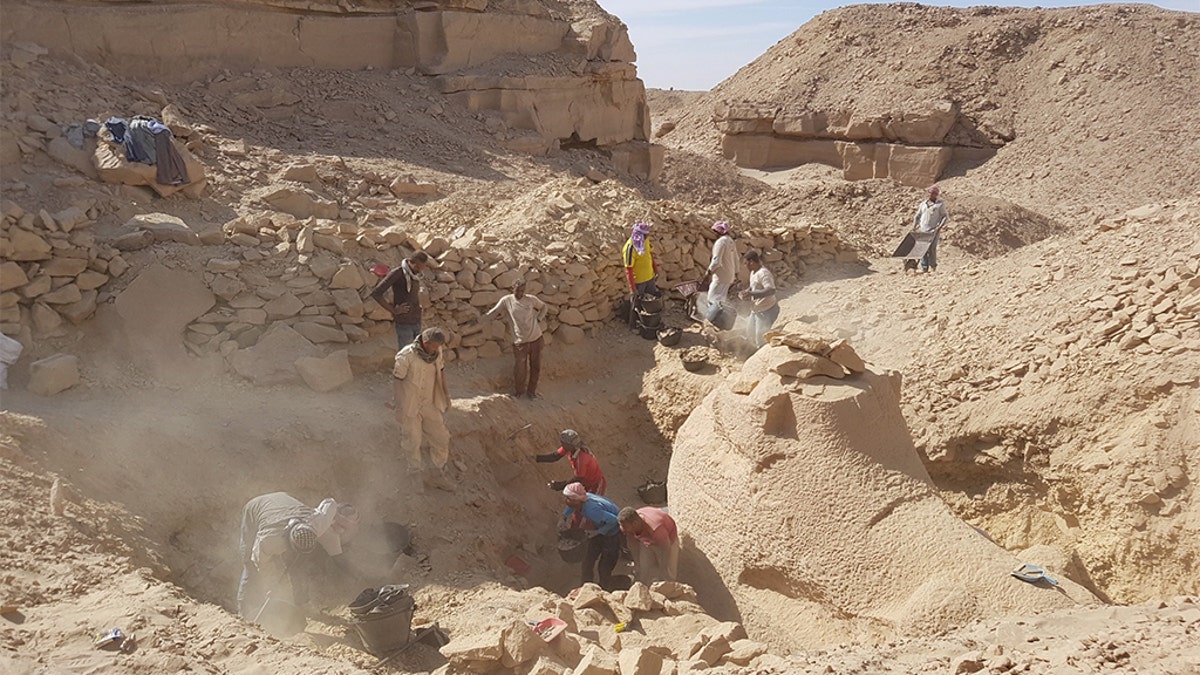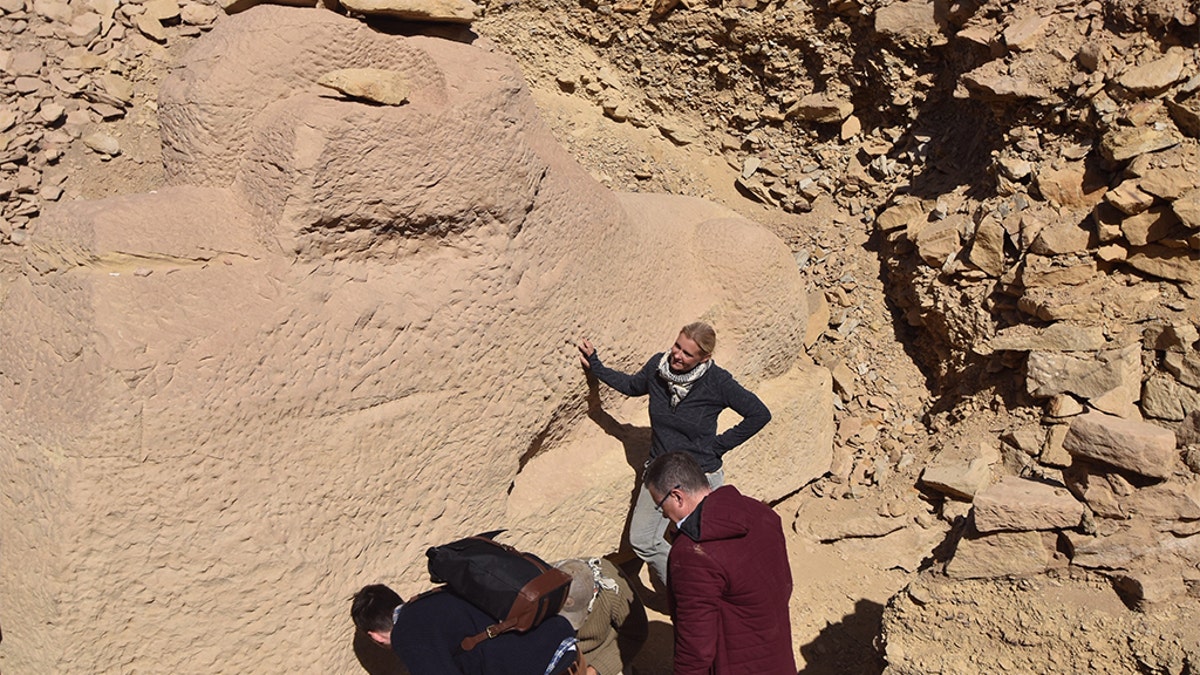
The ram-headed sphinx was discovered in an ancient quarry. (Gebel el Silsila Project)
Archaeologists in Egypt have discovered a large ram-headed sphinx that is linked to King Tutankhamun’s grandfather.
The sphinx, which is 16.4-feet long, 11.5-feet high and 5-feet wide, was found beneath several feet of debris at Gebel-el-Silsila, an ancient quarry on the Nile. Only its head was visible prior to excavation.
The sculpture is believed to be from the time of King Tut’s grandfather, the pharaoh Amenhotep III, who ruled in the 14th century B.C.
STUNNING SPHINX DISCOVERY: WORKERS MAKE INCREDIBLE FIND WHILE FIXING ROAD
The criosphinx (or ram-headed sphinx) is carved in a similar style to those at the famous Khonshu Temple at the huge Karnak complex, according to experts.

The sphinx dates to the time of King Tut's grandfather. (Robert Mittelstaedt/Gebel el Silsila Project)
“During the sphinx excavations and placed up-side-down next to the large sculpture’s stomach, the team discovered a smaller practice piece of another sphinx, perhaps carved by an apprentice,” archaeologists explain, in a blog post. “Both sculptures are preserved in a rough-cut and prepared for transportation, but were likely abandoned at Gebel el-Silsila as the larger sculpture fractured.”
Near the smaller piece, a rough-cut “uraeus,” or coiled cobra, was found. Experts note that the sculpture was intended to crown the head of the larger sphinx.
STUNNING SPHINX DISCOVERED AT ANCIENT EGYPTIAN TEMPLE
Both sphinxes were covered in Roman-era quarry debris.

The site prior to excavation. (Gebel el Silsila Project)
Parts of an obelisk were also found in the ancient sandstone workshop, along with a quarry text from the site’s opening, written during Amenhotep III’s reign.
LiveScience reports that, when Amenhotep died, the sculptures he commissioned may have been left unfinished.
KING TUT TOMB MYSTERY: EXPERTS EXPLAIN STRANGE SPOTS ON BURIAL CHAMBER'S WALLS
The excavation at Gebel el-Silsila is a joint Swedish-Egyptian project led by Dr. Maria Nilsson and John Ward of Sweden’s Lund University under the supervision of Egypt’s Supreme Council of Antiquities and the Aswan and Nubia Inspectorate.

Fragment of a winged solar disk discovered in the ancient quarry. (Gebel el Silsila Project)
“Excavations and digital recordings are scheduled to continue during the mission’s upcoming field season,” the archaeologists explain, in the blog post.
While the famous Great Sphinx of Giza on the outskirts of Cairo is the best known, there are a number of smaller sphinxes at other ancient Egyptian sites.
AMAZING MUMMIES DISCOVERY: REMAINS OF DOZENS OF PEOPLE, INCLUDING CHILDREN, FOUND IN EGYPTIAN TOMBS
Last year, for example, archaeologists discovered a stunning sphinx statue at an ancient temple in southern Egypt. The sandstone statue was found during a project to reduce groundwater at Kom Ombo temple in Aswan.

Only the sphinx's head was visible prior to excavation. (Gebel el Silsila Project)
Also in 2018, a mysterious sphinx was uncovered during roadwork in the Egyptian city of Luxor. The sphinx was found at the site of a road connecting Luxor Temple and the Temple of Karnak, two vast ancient temple complexes on the east side of the Nile.
CLICK HERE TO GET THE FOX NEWS APP
In a separate project, experts recently explained the strange spots on the walls of King Tut’s burial chamber.
Fox News’ Chris Ciaccia contributed to this article.
Follow James Rogers on Twitter @jamesjrogers




















